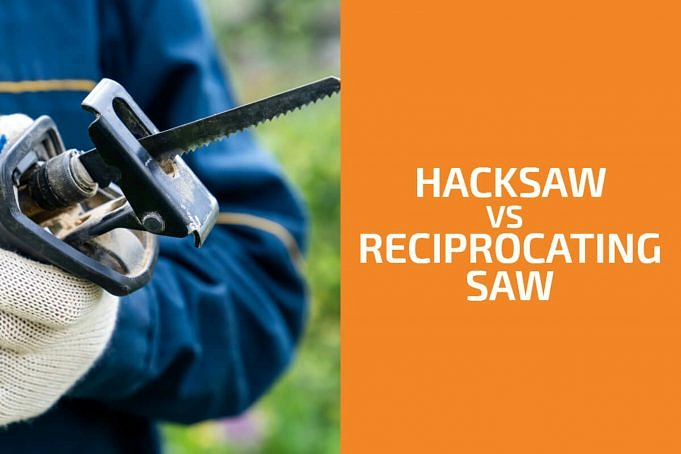The hacksaw and reciprocating saw are two options that will cut through metal, wood and plastic fast and efficiently. Both of these saws are incredibly powerful and can get the job done quickly, but they each have their own unique benefits. Which one is best for you?
A hacksaw is best for cutting hard materials like metal and a reciprocating saw is best for cutting wood. If you need to do both, then you will need both tools.
With either of these saws, youll be able to breeze through your projects in no time. But before you make your decision, be sure to read our comparison below to see which one would be best for your needs. Keep reading!
vs
Hacksaws are a type that can be used to cut metal and other hard materials. It has a thin, curved blade that is held in place by a frame.
A reciprocating saw can be used to cut through soft materials such as wood and plastic. It has a blade that moves up and down quickly.
What Is The Difference Between A Hacksaw And A Reciprocating Saw?
The main difference between a hacksaw and a reciprocating saw is that a hacksaw is used to cut through metal or other hard materials, while a reciprocating saw is used to cut through wood, plastic, and other soft materials.
Hacksaws are smaller than reciprocating and have a curved blade, while reciprocating saws have straight blades.
Which One Should I Use?
Hacksaws are best used for cutting through metal or other hard materials, while reciprocating saws are best used for cutting through wood, plastic, and other soft materials.
If you are not sure which type of saw to use, ask a professional. They can help you select the right tool for your job.
Which Is Best?
Hacksaws are better for cutting through metal or other hard materials, while reciprocating saws are better for cutting through wood, plastic, and other soft materials.
Ask a professional if you’re not sure what type of saw to choose. They can help you select the right tool for your job.
How Do I Know If A Hacksaw Is The Right Tool For My Job?
A hacksaw is the right tool for cutting through metal and other hard materials. If you need to cut through wood, plastic, or other soft materials, a reciprocating saw is a right tool for the job.
The Advantages Of Each Saw
Hacksaw blades are thin and have large teeth, making them perfect for cutting through metal. They are also relatively inexpensive.
Reciprocating saw blades, on the other hand, are thicker and have smaller teeth, making them ideal for wood and plastic. These blades can be used to cut metal but are less efficient than hacksaw blades.
Features
A hacksaw is a tool that has been around for centuries. It is a simple saw that has a serrated blade that is mounted to a frame. The reciprocating saw is a newer tool that has only been around for a few decades. This saw is more advanced and has a motor that moves the blade back-and-forth.
- The hacksaw is a more versatile tool. The hacksaw can be used to cut wood, metal, and plastic. The reciprocating saw can only be used to cut metal and plastic.
- The hacksaw is a more compact tool. The hacksaw can be easily carried in a backpack or toolbox. The reciprocating saw is larger and heavier, and it can only be carried in a toolbox.
- Hacksaws are more user-friendly. The hacksaw is simple to use and does not require any special skills. The reciprocating saw is more complicated to operate and requires some training.
- The hacksaw is a more durable tool. The hacksaw can be used for a long time without breaking. The reciprocating saw is not as durable and will break after extended use.
- Hacksaws are a reliable tool. It always performs the same way each time it is used. The reciprocating saw is not as reliable and can vary in performance from one time to the next.
- The hacksaw is a more safe tool. It has a lower risk of injuring the user. The reciprocating saw is much more dangerous and poses a greater risk to the user.
Safety Precautions
When using any saw, it is important to take certain safety precautions to avoid injury. Use a hacksaw with a sharp blade to avoid injury.
Use a reciprocating saw to cut the right material. Make sure that the blade fits in the chuck. Safety goggles are required for any saw.
Conclusion
The hacksaw is an excellent choice if you’re looking for general-purpose cutting. The reciprocating saw is a better option if you are looking for more precise or heavy-duty cutting.
Make sure to consider what type of material you will be cutting and your own level of expertise before making a purchase.



